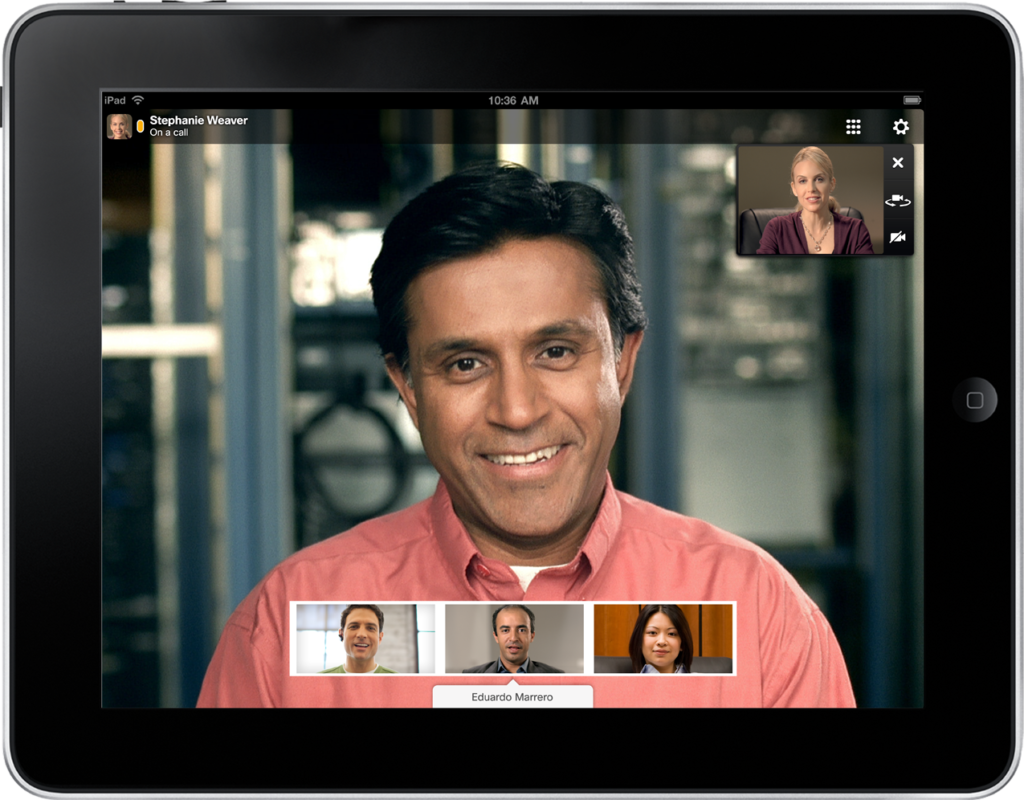Learning Outcomes
- Identify strategies to increase comprehension and reduce misunderstanding in group video communications
For group videoconferences, start with the same basic guidelines as for one-on-one chats in terms of both your preparation and your technology. Group calls look different, however. As noted earlier, in a group videoconference, you can see the faces of all the people in the chat.

Figure 1. Group videoconferencing.
As you can see in figure 1, everyone is at a slightly different angle with different lighting and distance from the camera. This is pretty standard in video chats.
Sometimes participants are represented by still photos. This is often because they don’t have the required bandwidth or are not in an appropriate place for a video chat. However, when they set up their login for the app they’re using, they did take the time to upload a photo to act as a placeholder.
One technical issue to note is that sometimes, the voice and the image don’t sync up all that well. When this happens, the most useful solution is patience:
- Wait until you’re sure the person speaking is finished before you start to speak.
- Watch faces to check whether anyone else looks like they’re about to speak.
- If things get chaotic, pay attention to the chat leader or host. Ideally, they will use both their voice and appropriate gestures to corral the call back into order.
- If you are the call leader, don’t be afraid to use a hand signal—for example, a raised hand to signal STOP—if things get out of control.
- If you have an especially large group, you can ask people to raise their hands when they wish to speak, just as they would in a classroom. This means, however, that you as host/leader have to be on the lookout for raised hands.
Practice Question
